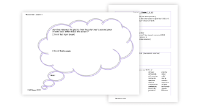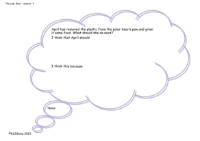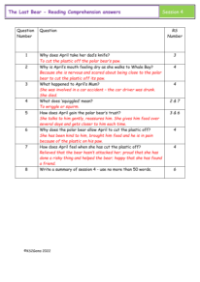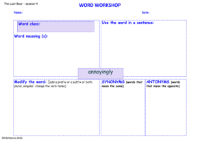The Last Bear - Session 4 - Worksheet
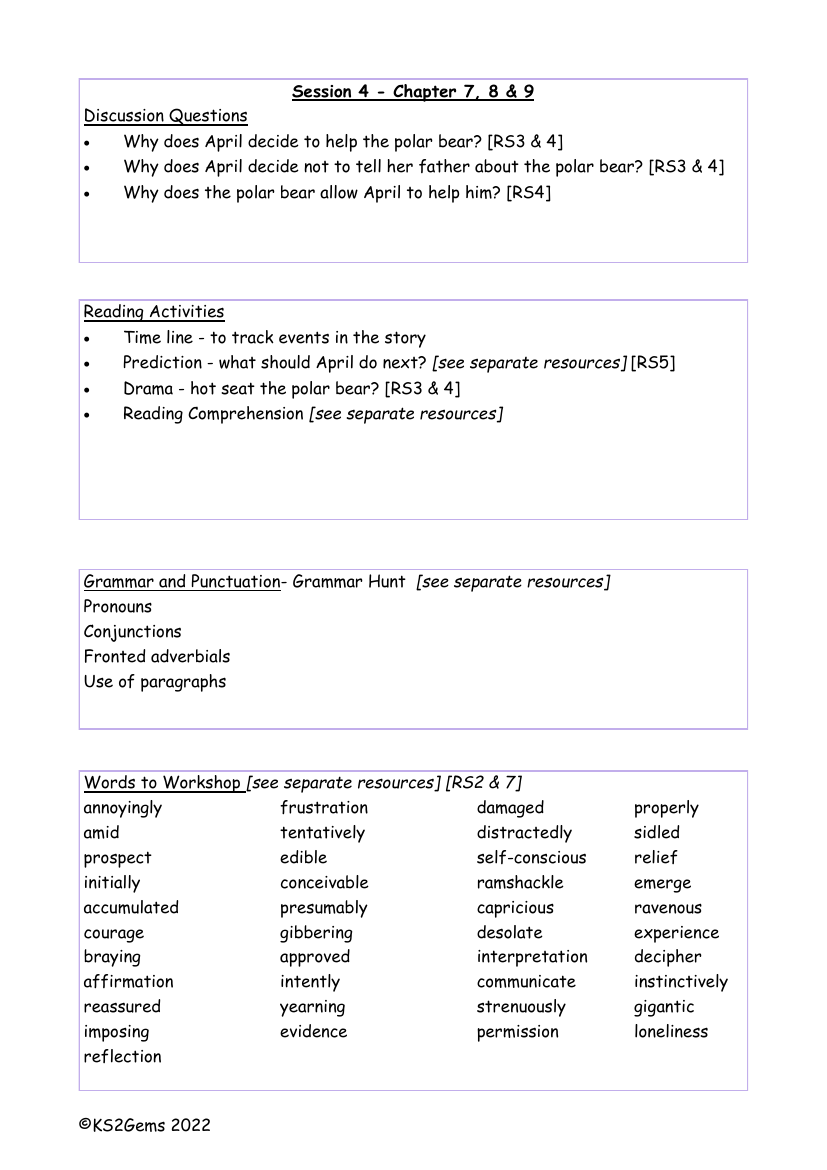
English Resource Description
In the fourth session of "The Last Bear" worksheet, students delve into chapters seven to nine with a series of discussion questions that encourage them to consider April's motivations for helping the polar bear and her decision to keep her actions a secret from her father. These questions aim to deepen the students' understanding of the characters' relationships and the emotional dynamics within the story, while also aligning with specific reading standards (RS3 & 4).
The worksheet offers a variety of reading activities to engage students further, such as creating a timeline to track the events of the story, making predictions about April's next steps, and participating in drama exercises like hot seating the polar bear. These activities are designed to enhance comprehension and analytical skills. In addition, the session includes a grammar and punctuation section, known as the Grammar Hunt, where students can identify and work with pronouns, conjunctions, fronted adverbials, and paragraph usage. Vocabulary development is also a key focus, with a "Words to Workshop" list that presents a range of descriptive terms for students to explore. Writing opportunities are provided, encouraging creativity through diary entries from the perspective of the polar bear, reports on Arctic animals, and poetry inspired by various poets and themes related to the polar bear's plight.
Cross-curricular links are abundant, with connections to science topics like animal biology, habitats, and global warming. In computing, students can create simulations and presentations, while history and geography lessons can explore Arctic exploration and the physical and human geography of Bear Island. Art, design and technology, music, physical education, religious education, and personal, social, health, and economic education (PSHE) are also integrated, offering a holistic approach to learning. Additionally, students are encouraged to engage in environmental stewardship through activities such as litter picking in the school grounds or local area, fostering a sense of responsibility and awareness of their impact on the world.
